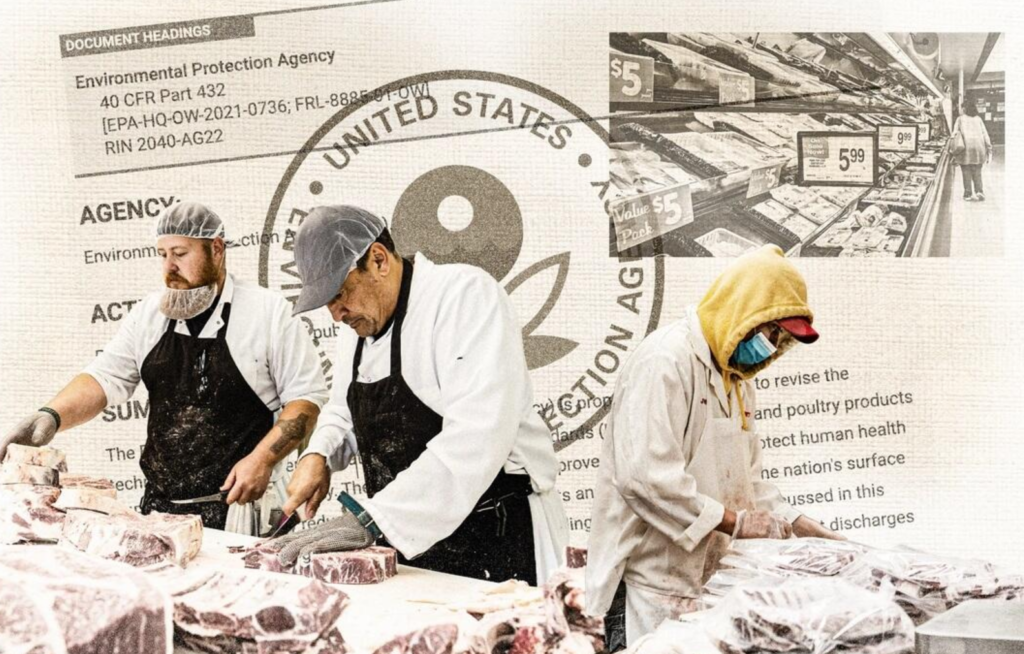In recent years, food prices, particularly for meat and poultry, have experienced significant increases, raising concerns about future affordability. According to a report from the U.S. Department of Agriculture’s Food Price Outlook, which was released in September, beef and veal prices have seen a continuous increase for six months and are projected to rise by 5.2% in 2024. Poultry prices are also on the rise, albeit at a lesser rate, and are expected to experience further increases by year’s end. Various factors contributing to these price hikes include supply chain disruptions caused by the COVID-19 pandemic and the highest inflation rates observed since the 1980s. As analysts look ahead, the outlook for meat and poultry prices in 2025 appears grim, particularly with incoming regulations from the Environmental Protection Agency (EPA) that could further impact production and pricing in the sector.
The proposed EPA regulations aim to impose new effluent, or wastewater limits, on meat and poultry processors, a move that has the potential to disrupt the industry dramatically. Announced in January, the changes sparked a period of public commentary during the spring. The anticipated final rule is set to be implemented by August 2025, prompting significant opposition from numerous states, industry stakeholders, and policy experts. Detractors warn that the new regulations could lead to job losses, supply chain disruptions, and a negative impact on food affordability for consumers. These proposed changes were primarily driven by recent lawsuits from a coalition of environmental organizations that aimed to challenge the Trump administration’s failure to update outdated water pollution standards affecting slaughterhouses and processing plants.
The specifics of the proposed regulations indicate a move towards stricter limits on wastewater discharges, with the EPA estimating a decrease in pollutants released from processing facilities by around 100 million pounds annually. For the first time, the rules will also set limits on phosphorus and establish pretreatment standards for issues such as oil, grease, and total suspended solids. The measures will directly affect approximately 850 of the 5,000 facilities within the U.S., predominantly large processors handling over 50 million pounds of meat annually. The EPA forecasts that implementing their preferred regulations may result in the closure of at least 16 facilities, potentially impacting up to 17,000 jobs, with some estimates suggesting that the number could rise to 53 plant closures.
The economic implications of these new rules are concerning, as they coincide with persistent inflation affecting consumers. With the expectation that prices for beef, chicken, turkey, and pork products could rise slightly while availability decreases, there are predictions that food affordability will become an even greater hurdle. EPA scientist Michael Nye has described the proposed regulations as “economically achievable,” suggesting that they are flexible enough for processors to explore cost-effective compliance pathways. However, the benefits touted by the EPA regarding reduced pollution levels and improved environmental conditions are tempered by the grim realities of possible job loss and increased prices for consumers.
Opposition to these new regulations has materialized in the form of a coalition of attorneys general from 27 states, led by Kansas and Arkansas. Their main argument centers on the perception that the rule change constitutes federal overreach. They contend that regulating processors that release wastewater into treatment plants is unnecessary and question the validity of data underpinning the EPA’s proposals. By extending regulations to include indirect discharges, opponents argue that the EPA’s authority has expanded beyond what is acceptable, encompassing thousands of additional facilities that were previously not under such regulations. In light of sustained high inflation, critics assert that shutting down processors due to stringent regulations would exacerbate an already difficult economic situation for consumers.
The economic data cited by the EPA to justify the necessity of these rules has been scrutinized, with attorneys general emphasizing their reliance on findings from environmental groups that had filed lawsuits against the agency. Critics argue that utilizing information from these groups raises questions about objectivity and accuracy. For example, the EPA referenced data from a 2018 report alleging significant nitrogen emissions from certain processing facilities, which underscores the extent of the environmental issues at hand. However, the ongoing debate underscores a fundamental tension between the need for environmental protection and the necessity of maintaining affordable food supplies and stable jobs for the workforce in the meat and poultry processing sector.
As the regulatory landscape evolves, the intersection of environmental regulation, economic impacts, and food affordability remains a balancing act fraught with complexity. The proposed EPA rules highlight a growing recognition within the federal government of the need to address environmental concerns tied to meat processing while also grappling with the realities of economic sustainability in a time of rising food prices. As stakeholders from various sectors voice their opinions, the road ahead for meat processors, consumers, and policymakers will require stringent consideration of both environmental imperatives and the overarching need for a stable food supply that is accessible to all.

